Can you cut 1 Tonne of carbon pollution out of your life?
Take the challengeThis DIY is perfect for a waste-free and thoughtful gift.
Why not give this a go!
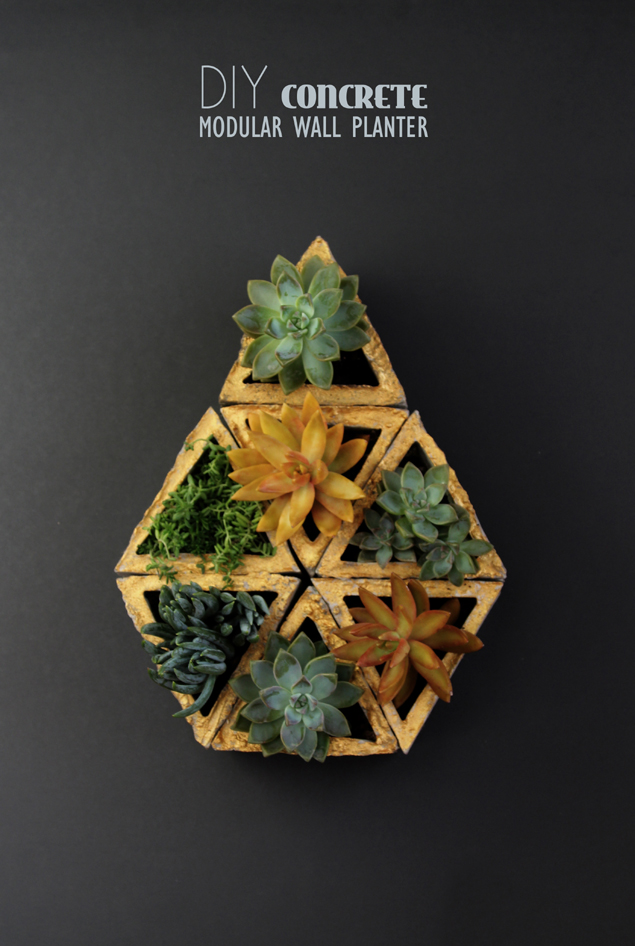
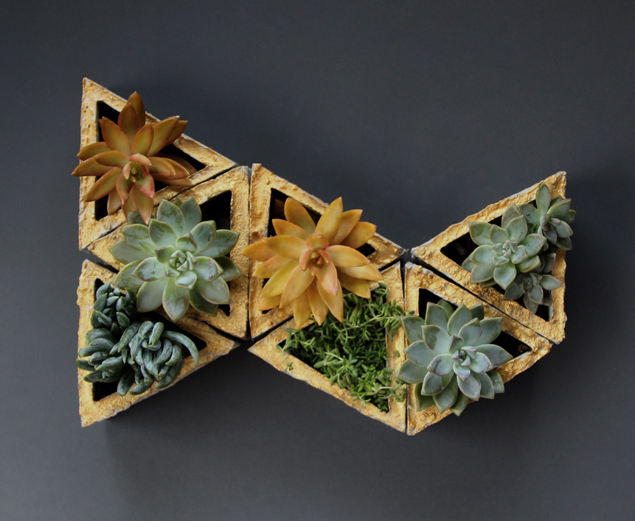
This DIY was originally posted on Instructables by A Piece Of Rainbow and is being republished under a creative commons ShareAlike license.
Each planter module is created from the shape of an equilateral triangle, the magical geometry which allows a group of modules endless possibilities of forming new shapes and patterns.
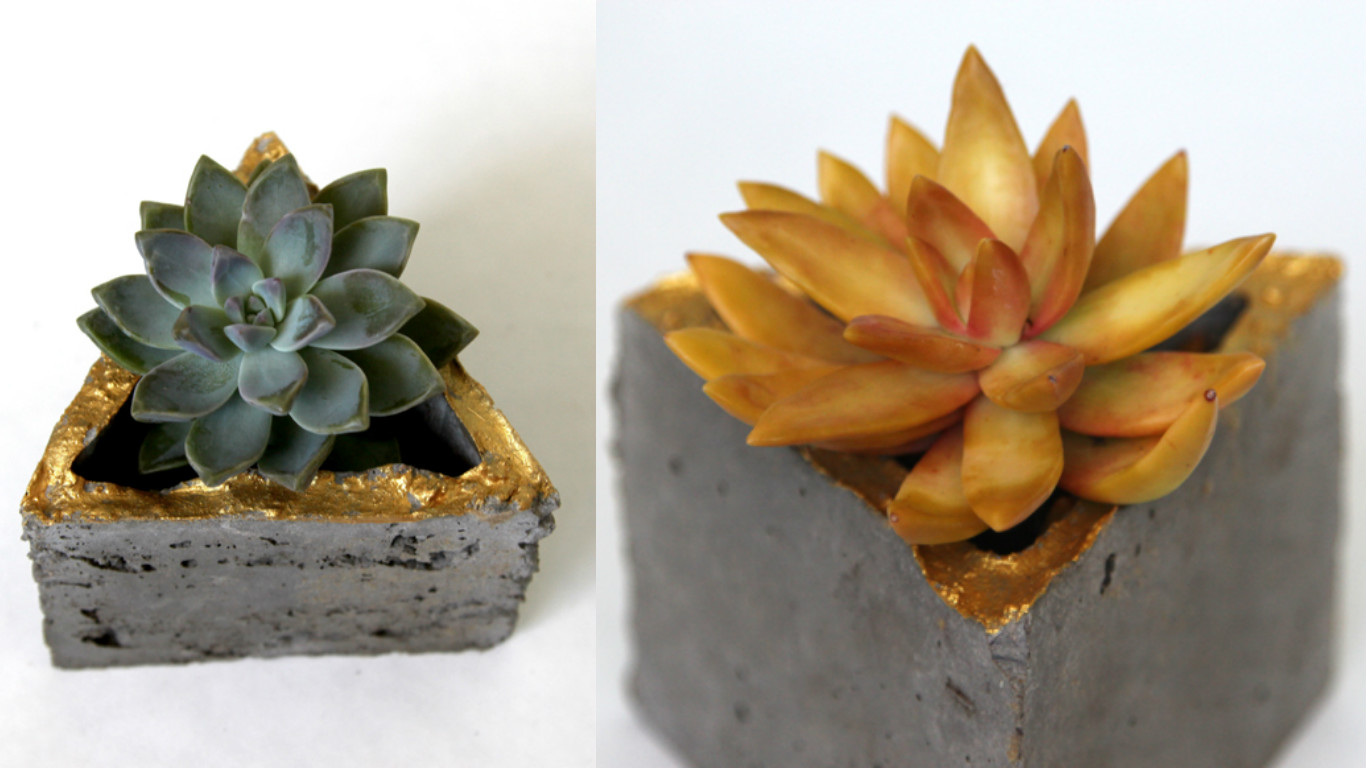
Materials and tools:
- pourable concrete mix (these normally come in 10kg bags - but you won't need that much!)
- cardboard or thick card stock for making the molds
- template for the molds, formatted for 8.5″x11″ – download template
- plastic containers to mix concrete, plastic bags for curing concrete
- box cutter or scissors, glue and tape for the molds
- gloves, dust mask
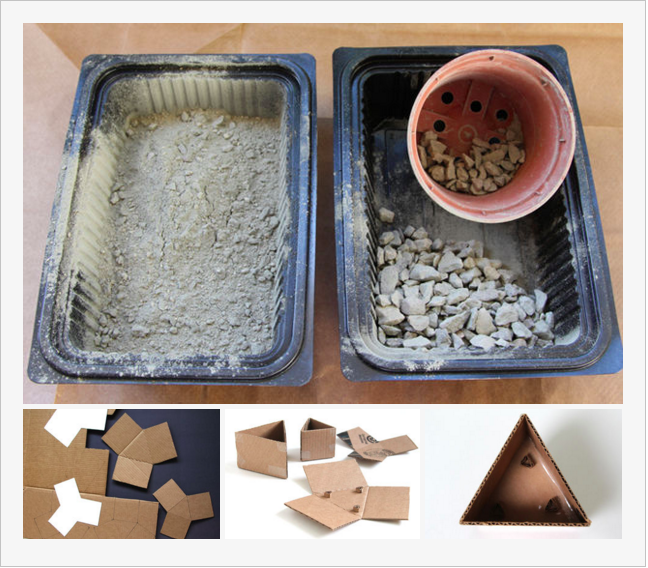
Print and cut out the template, trace onto cardboard, and cut out the inner and outer molds. The template for the outer mold on page 2 is larger than 8.5″x11″, so rotate it when you trace to complete the shape. Score, fold and tape each mold with scotch tape or masking tape. Fold 3/8″ wide strips of cardboard into triangular shapes and glue them to the inside bottom of the outer molds. These will function as drain holes and openings for hanging later.
Because these planters have thin walls, I decided to screen those bigger chunks of aggregates out of the Quikrete mix- a plastic nursery pot works great - and leave some small aggregates for strength. The aggregates give important structures that hold the cement together in concrete.
Note: There's a lot of confusion when people talk about cement vs concrete. It's important to understand the difference which will influence how we work with each material. "Cement is to concrete as flour is to a cake." This link here explains very nicely the difference between cement and concrete.
Mix the concrete following the proportions recommended on the bag, using the screened concrete as if it is the original mix. Wear dust mask and gloves when working with concrete.

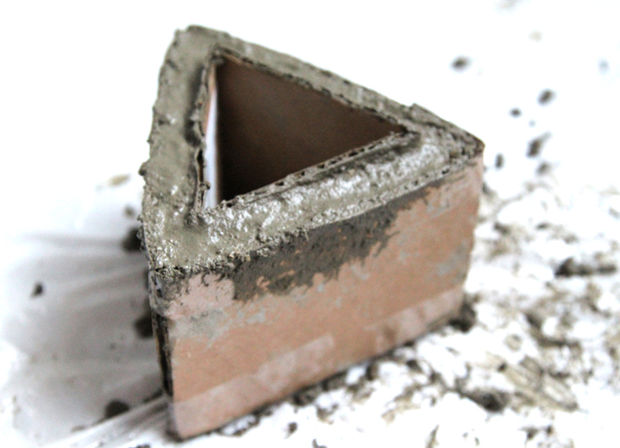
Make your planter
Pour the mix into the outer mold till it's level with the triangular
pieces, then place the inner mold inside, making sure it is centered. Pour the walls using a Popsicle stick to help pushing the mixture down.
Let the concrete cure! (very important)

Let the planters stay in the molds and cure for at least 3 days by
misting them daily and wrapping them in plastic bags. This is a very important step to ensure that the concrete hardens as much as possible so they don't chip or break. The more moisture you can keep in the plastic bag the better.
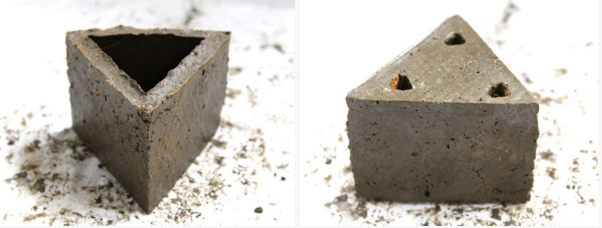
Decorate!
After day 3, take the planters out of the molds. Since concrete is
very alkaline and that can be a setback for plant growth, soak them in a tub of water for a day and let dry. I decided to paint the edges with gold acrylic paint for an added sense of mystery.
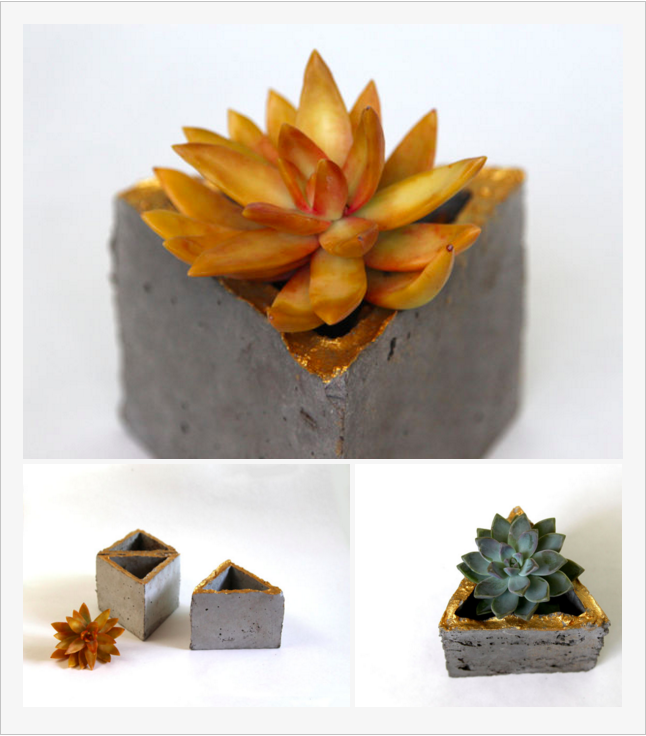
Now we are ready to plant. Succulents are great because they are easy to care for. Give the plants a couple of weeks to form roots that hold the soil in, and now we can hang or stack these planters to create our own mini vertical gardens!
To create a pattern on the wall, use the template to mark where the 3 openings on the bottom of each planter are, and use 1 or 2 nail / screw for each planter depending on the pattern you want to create. A few tips on maintenance: each week take these planters out and water them thoroughly, let them get some sun and fresh air. The best way is to make twice as many and rotate them so they get to spend half the time outdoors or by a sunny window.
Hope you have fun with it and create your own gorgeous living tapestry!
READ THIS NEXT: Give moments, not things during the festive season

